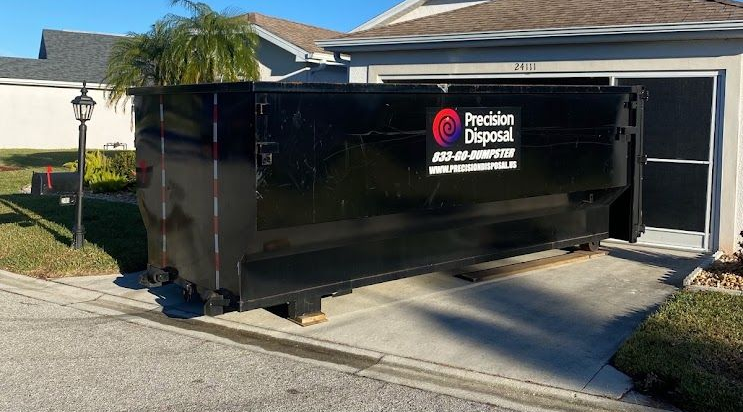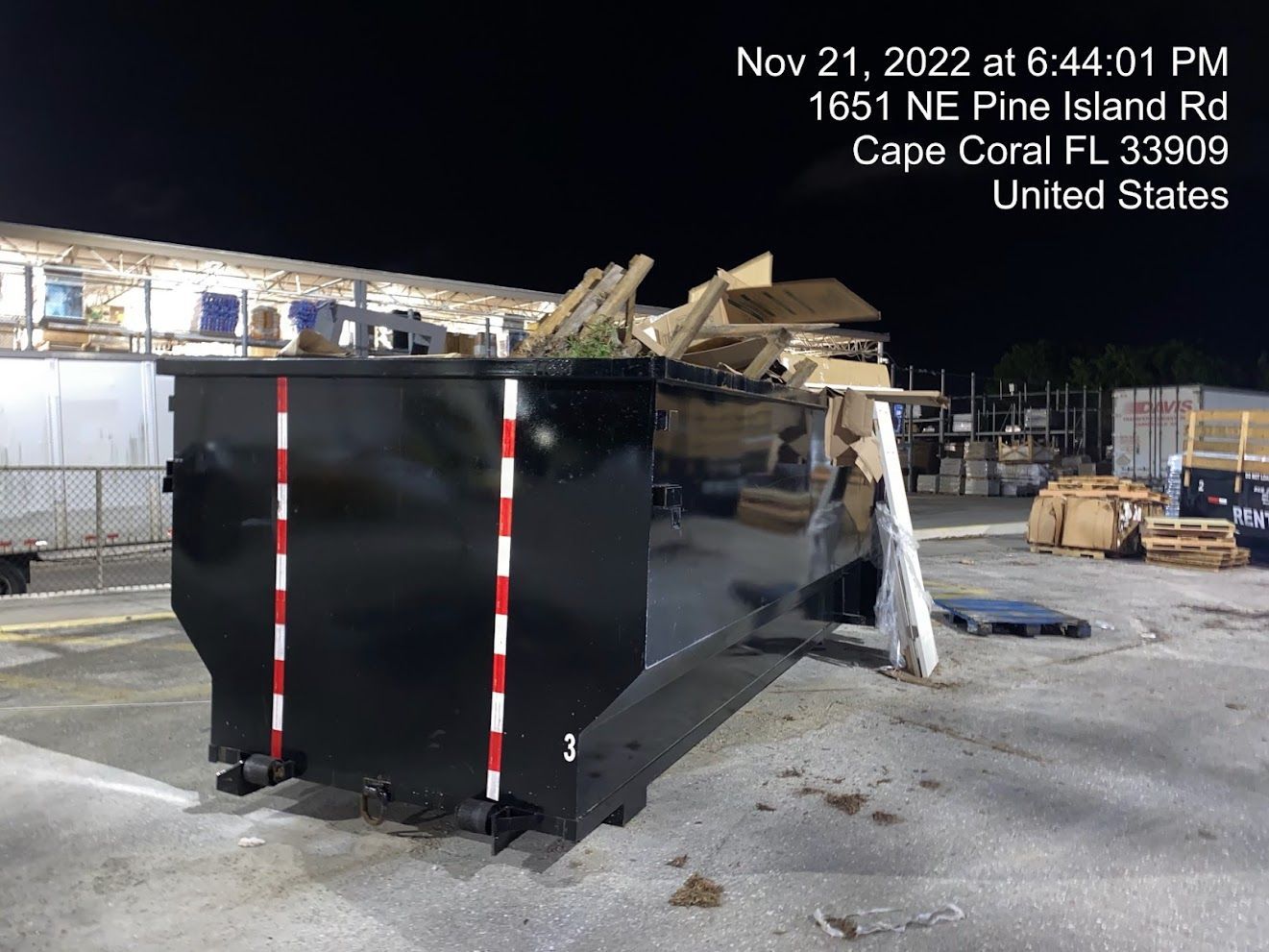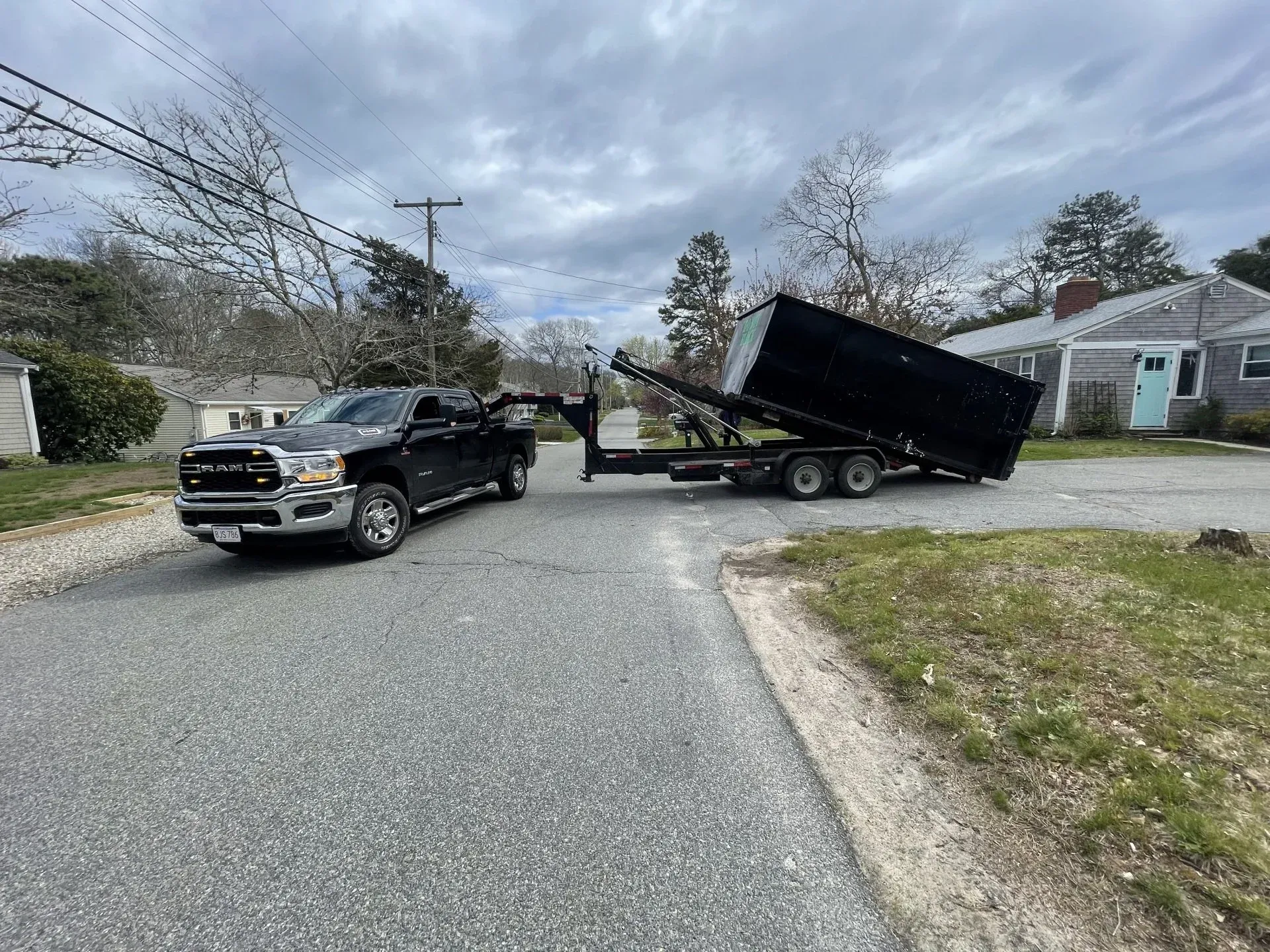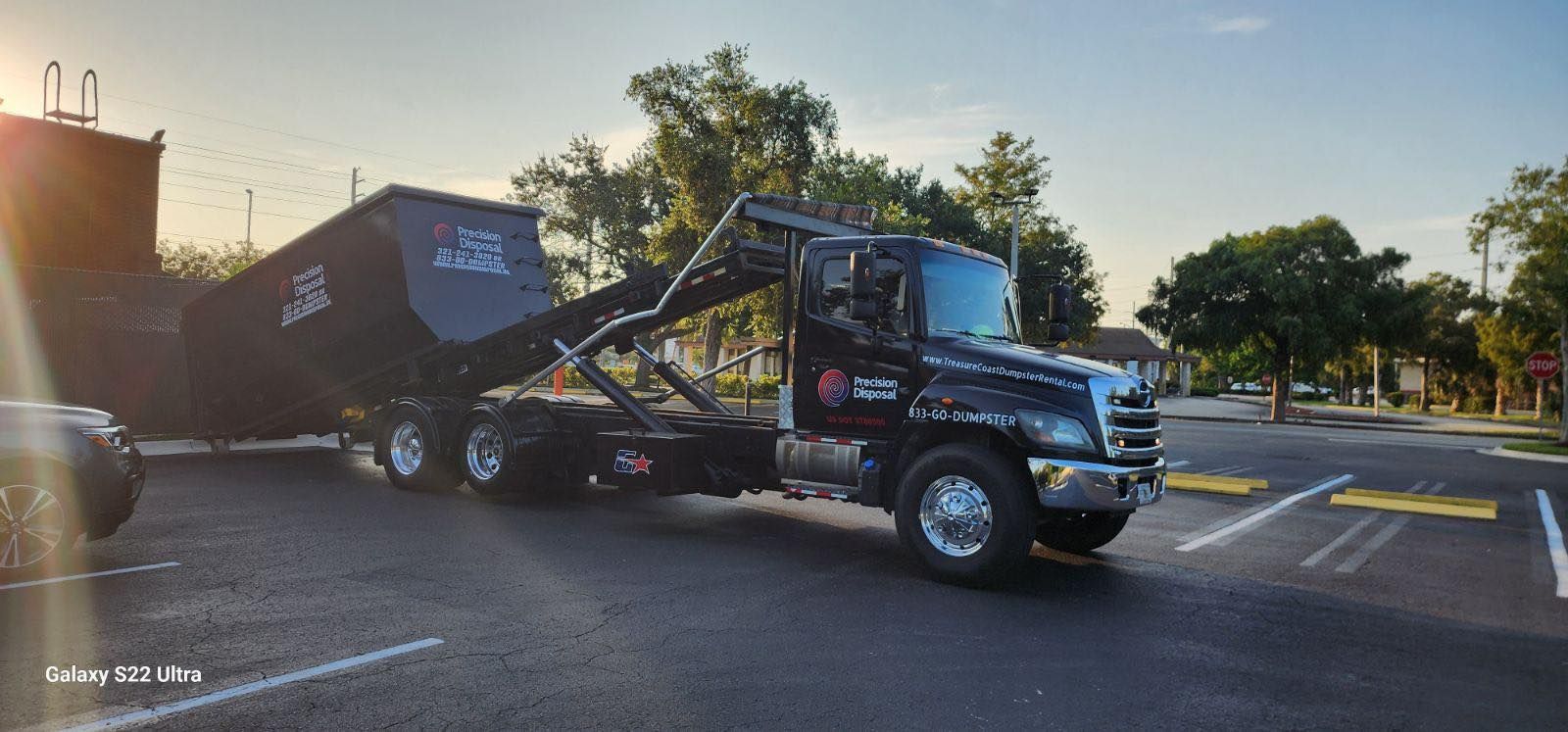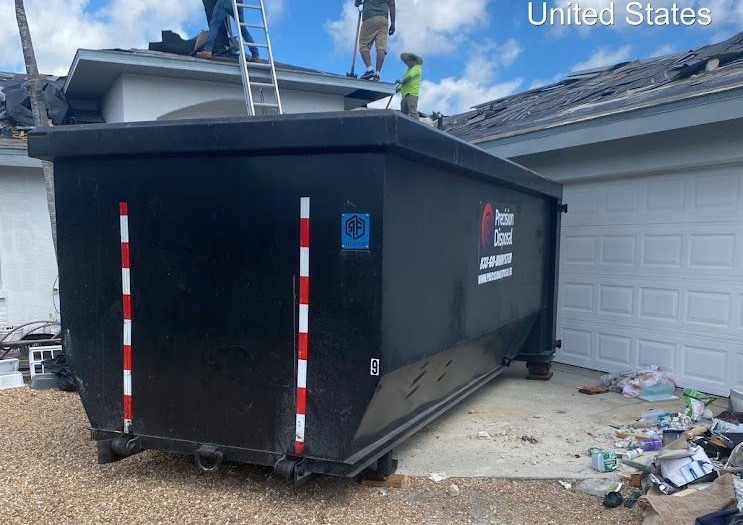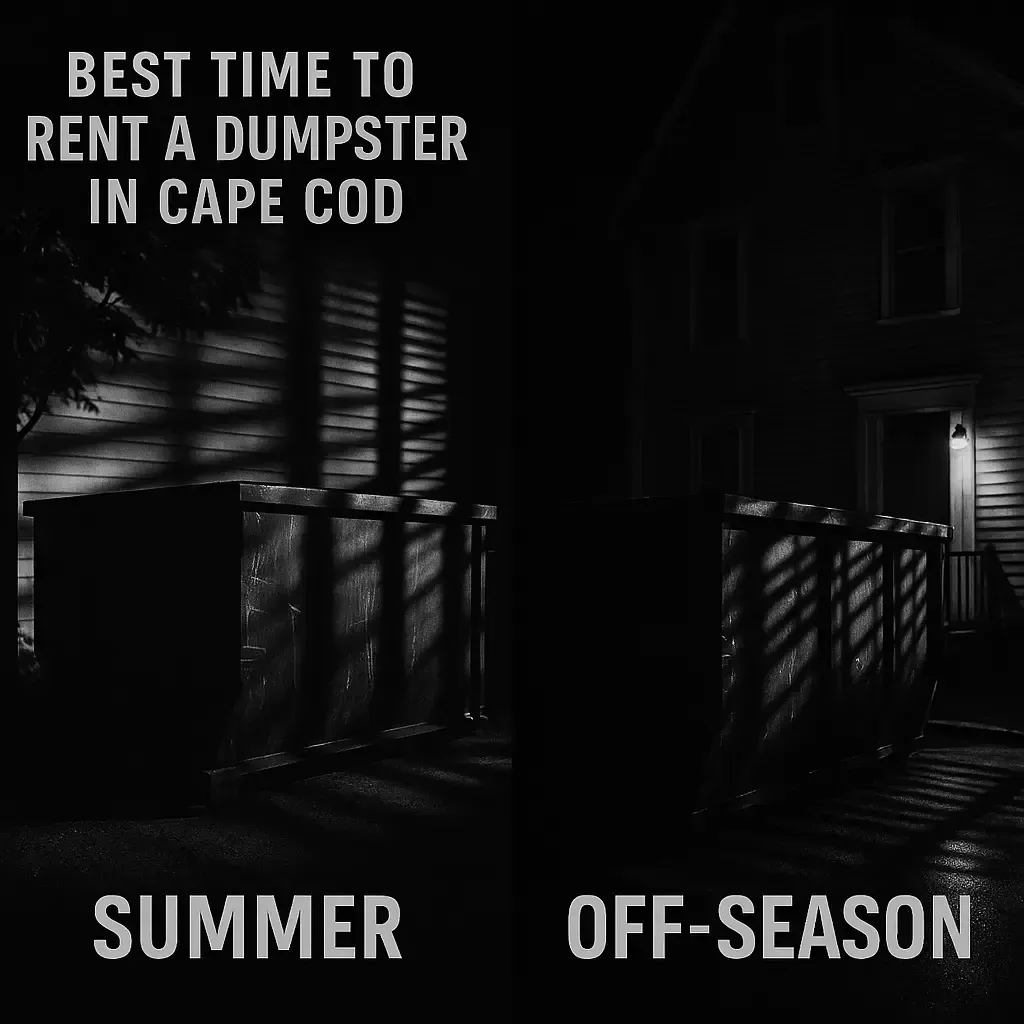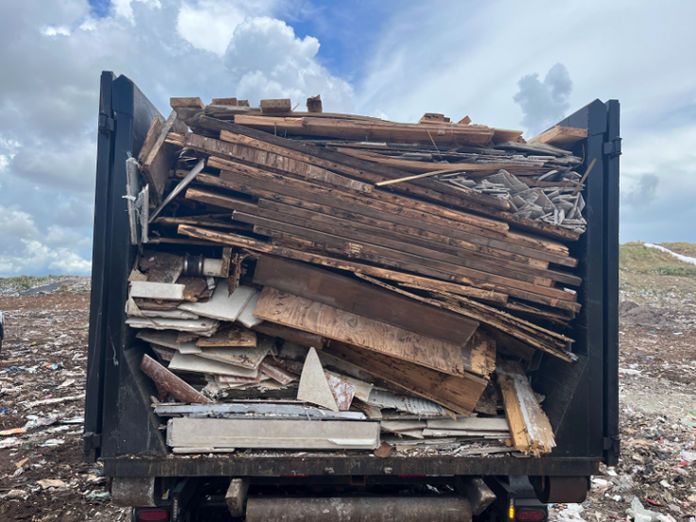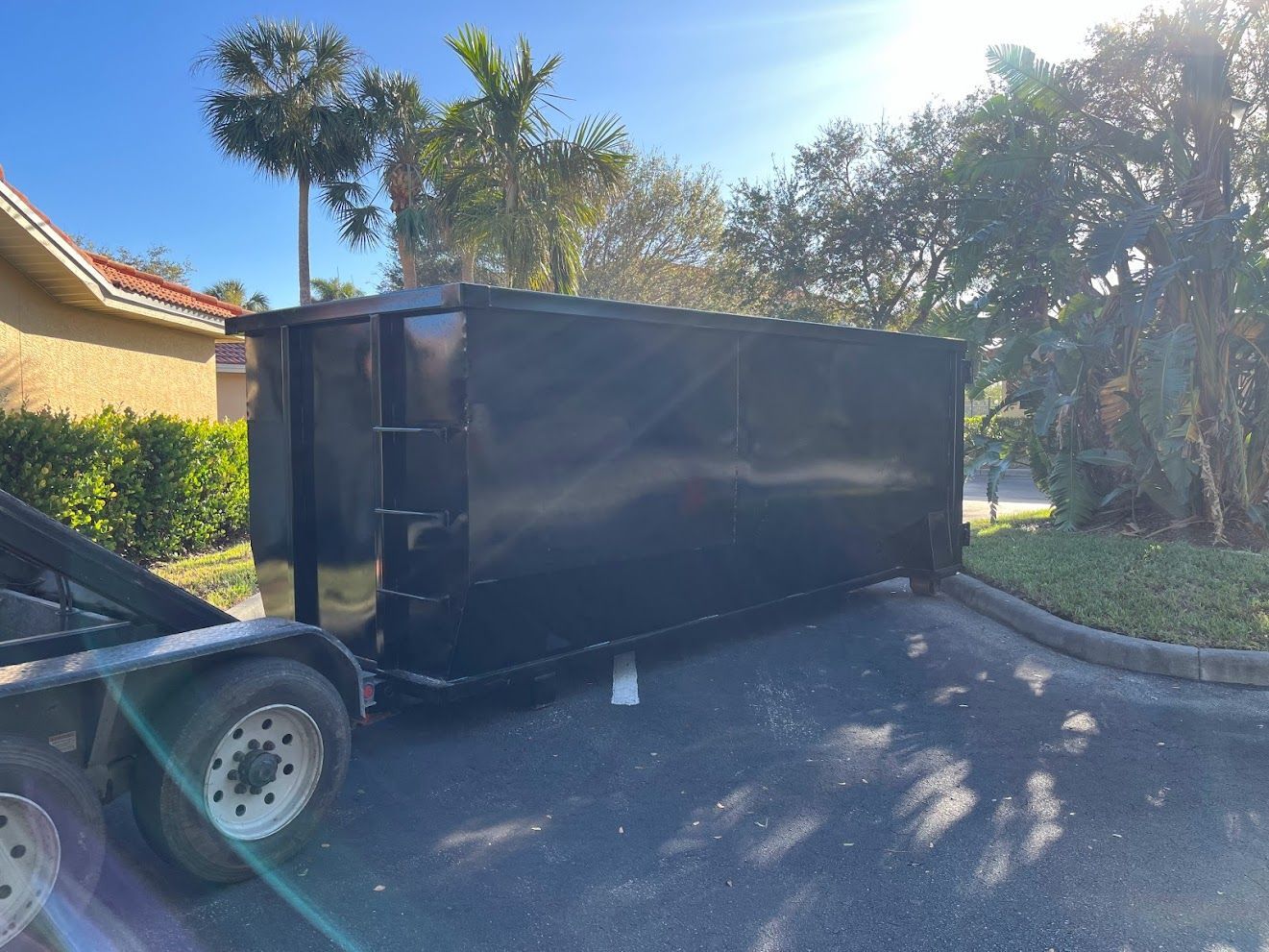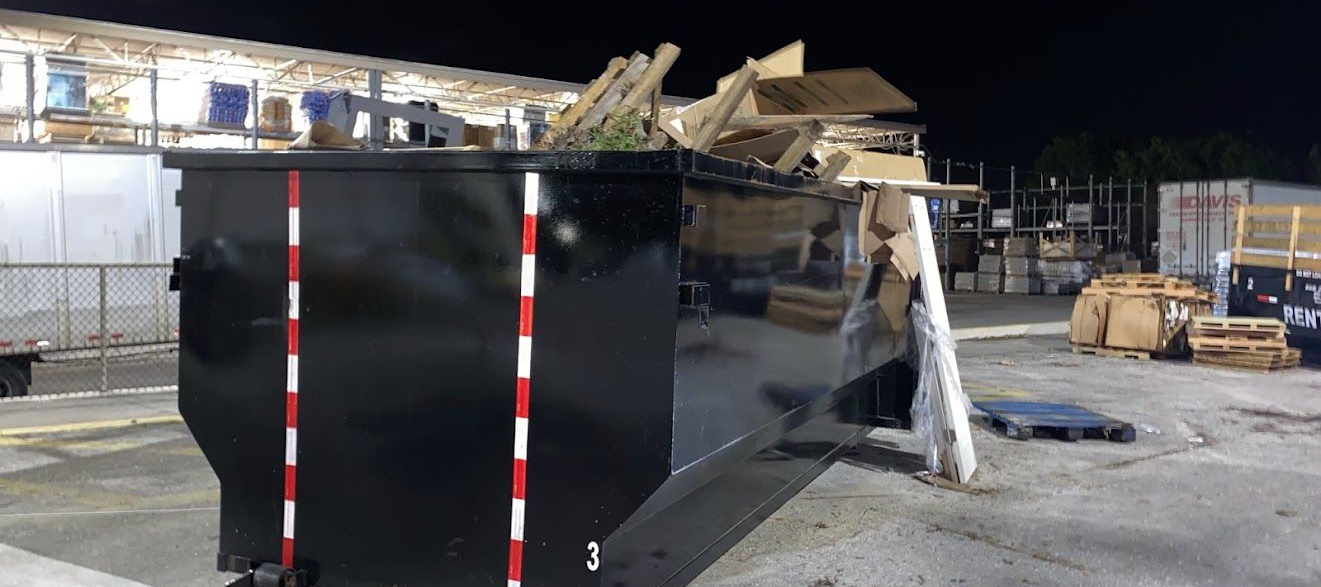How to Choose the Right Dumpster Size (General Guide + MA/FL/RI Callouts)
What Size Dumpster I Need?- Our most common question- here's a guide!
Picking the right size isn’t about how big the project feels—it’s about how heavy the debris is. Choose for density first, then volume. When in doubt, go smaller and plan a swap. That’s cheaper and safer than overweight fees.
The quick size map
- 10-yard: Heavy materials—concrete, brick, dirt, stone, tile, plaster, roofing tear-offs. Small bath renos and chimney demo.
- 15-yard: Kitchens/baths, flooring, deck boards, mixed C&D where some materials are dense.
- 20-yard: Whole-home cleanouts, light remodels, bulky but lighter debris (furniture, drywall, cabinets).
- 25-yard: This is a Precision Disposal special It is our most commonly rented size since it is the most rare but also offers the extra space a 20 doesn't have without the bulk of a 30
- 30-yard : Big cleanouts with mostly light items. Avoid for dense materials.
Rule of thumb: If a third or more of your load is dense (masonry, roofing, dirt, tile, plaster), act like you’re loading a heavy-debris job. That means 10–15 yard and likely a swap.
Step 1: List materials by density
- Dense: concrete/masonry/brick/stone, dirt/soil/sod, roofing shingles, plaster/tile.
- Mixed: drywall + cabinets + flooring + a small amount of tile/plaster.
- Light/bulky: furniture, bagged junk, wood trim, cardboard.
Step 2: Match to a container
- Mostly dense: 10-yard (or 15 if you need extra floor space). Expect to swap.
- Mixed reno: 15-yard is the workhorse—enough room without inviting overweight.
- Light cleanout: 20-yard (or 30 if available) for big volume without the weight risk.
Step 3: Reality-check access and timing
- Driveway slope/length: The truck needs room to set and pick.
- Trees/wires: You need 10–12 feet of overhead clearance.
- HOA/permits: Private roads may allow driveway only; street placements often require permits.
- Schedule: If your job is staged (bath this week, roof next), plan multiple swaps rather than one massive can.
Real-world scenarios
Full roof tear-off (one layer): A
10–15 yard is the safest call. Two layers? Stick with 10–15 and expect a swap.
Kitchen + flooring + a little tile:
15 yard. Load tile and appliances first, then lighter debris.
Estate cleanout with furniture and bagged junk:
20 yard (or 30 if available). Break down furniture and boxes to avoid hitting the rails early.
Concrete patio removal:
10 yard, level with the rails. Do not fill a 20 with concrete—overweight ticket waiting to happen.
Mistakes that blow up budgets
- Choosing by house size, not debris type. A small bathroom of tile and plaster can outweigh a big living room of furniture and drywall.
- “Bigger must be better.” Bigger cans invite you to throw dense debris until it’s overweight.
- Forgetting water weight. Rain turns drywall and yard waste into tonnage. Tarp every night.
- Mixing heavy and light to “use the space.” You’ll hit the ton cap long before you run out of volume.
Loading rules that make any size work
- Heavy goes low and centered; lighter items fill the corners.
- Break down everything you can—doors off fridges (after certified refrigerant recovery), legs off tables, cabinets flattened.
- Stop at the rail and latch the door before topping off with light items.
- Keep restricted items (liquids, fuels, batteries, propane, mercury bulbs, tires, refrigerant-charged appliances) out of the can.
FAQs
Is a 20-yard always cheaper per cubic yard?
Sometimes, but the cost of a single overweight ticket can erase any “per-yard” savings. Size for weight first.
Can I load concrete in a 20-yard if I take it easy?
Don’t risk it. Concrete belongs in a
10–15 yard with a flat, level load. Swap when you’re at the rail.
What if I’m between a 15 and a 20?
Pick the
15 if you have any dense materials. If it’s all light/bulky, choose the
20 and break everything down.
How many swaps should I plan?
For roofs, concrete, or tile-heavy jobs: at least one. Swaps beat overweight fees every time.
State callouts
Massachusetts: Older homes = plaster/lathe and brick chimneys. Choose
10–15 yard for gut jobs even if the house is big. Winter access matters—clear ice/snow so pickups don’t fail.
Florida: Afternoon storms and hurricane season add water weight and soft ground. Tarp nightly and avoid placing in grass swales. Roofing/tile common—size for density, not volume.
Rhode Island: Small lots and narrow streets reward
smaller cans with swaps. Confirm set/pick windows; keep parallel-park lanes clear for the truck.

